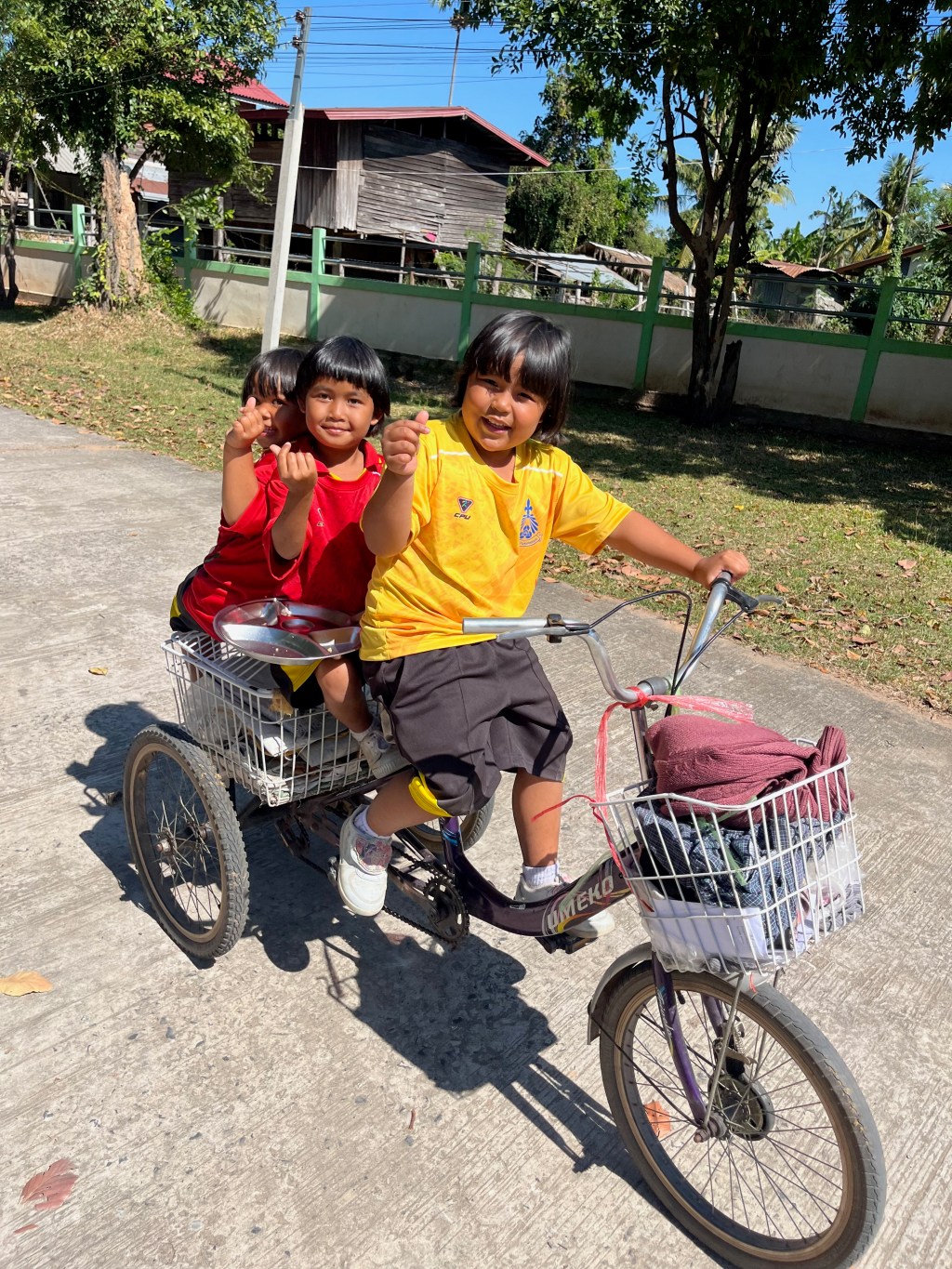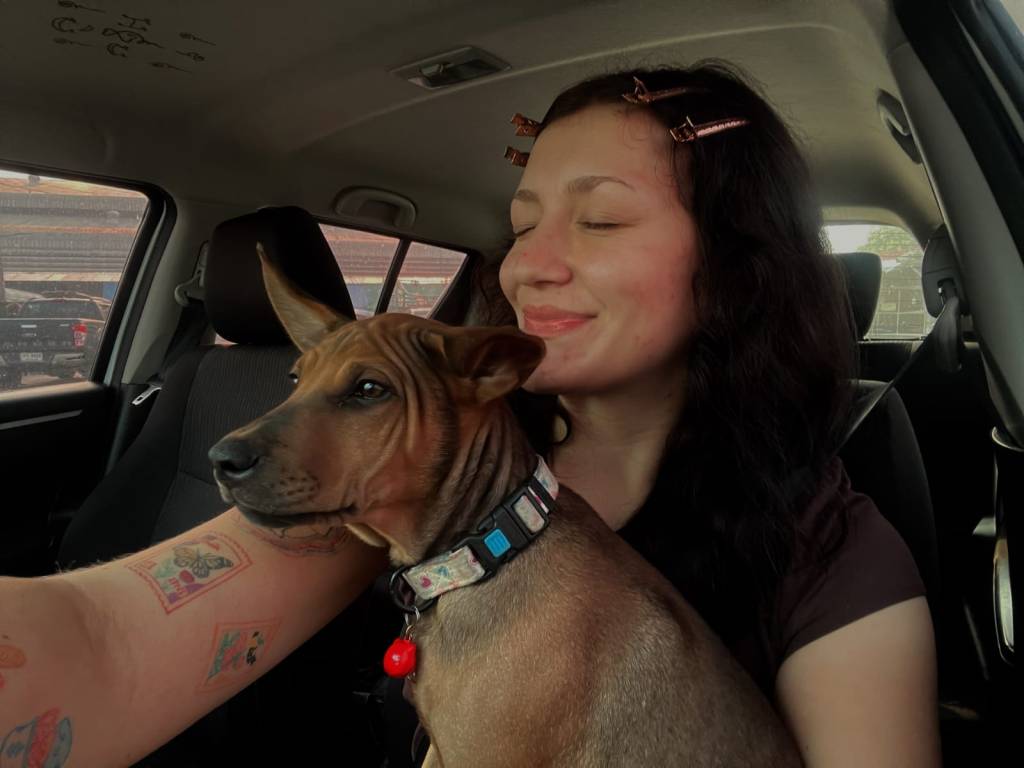Snake Snake Fish Fish is an ongoing series based around Thai idioms/phrases/colloquialisms, written about and illustrated by Cloé Fortier-King and guest contributors.
GUEST EDITION: This week, Kayla Kawalec is the contributing author of the Snake Snake Fish Fish column
Kayla Kawalec, 134 YinD
Author’s Note: I originally started writing this piece as an addition to the recent Sticky Rice staff group article, but realized a few paragraphs in that I had more than just a little blurb to say. Plus, the Thai word that sums up the past year at site for me isn’t technically a Thai word at all…

If you’ve ever visited or lived in Thailand, you’ve likely heard the word ฝรั่ง (farang) spoken in your vicinity. It can be translated to mean either “foreigner” or “guava”. I’d heard the word used many, many times by Thai people in reference to myself, other volunteers, market fruits and the tourists buying them, before I even moved to my permanent site where I am now the one and only (foreigner, not guava) for many, many kilometers.
The word isn’t typically used derogatorily, but it never failed to dishearten me when it was directed towards me. All I wanted in the beginning of service is was what everyone typically wants – to fit in. I wished my brown hair, green eyes, and skin color that might be described as “pasty” in tan-obsessed America, didn’t stand out so much from my new Thai friends and colleagues whose features shared a clear kinship. During pre-service training I used the Thai language as an talisman to protect myself from the farang label – “I might look like any passing tourist, but I’m not! I can speak Thai!! Go find your foreigner somewhere else, I belong.”
By the time I arrived to site, I’d convinced myself that my “language armor” was the key to service. My Peace Corps timeline went like this: Step 1: Master language; Step 2: Basically become Thai; Step 3: Then, obviously, the perfect volunteer. Naturally, I found it hard when faced with the fact that in the rural town where I would live for the next two years, they don’t speak Thai. Okay, please excuse the melodramatic effect. They technically speak Thai but in a northern dialect called คำเมือง (Kham Mueang). If you aren’t a linguaphile interested in reading the Wikipedia article linked, just know that the main differences between kham mueang and standard Thai are the different: sounds, words, and tones, so – mostly everything. Of course most people here understand standard Thai but the dialect infiltrates the speech of nearly everyone I know: from the new friends I was desperate to make at my Tessaban (local gov’t office), to my neighbors, the teachers at my schools, and, most prominently, my students. My armor was effectively cracked and I felt utterly out of place.
I realized after some requisite soul-searching in my first three or so months at site that instead of resisting the new dialect, it would benefit me far more to try to embrace it. One of the easiest ways to learn vocabulary in a new language is through food – it’s visual and obvious, and I could count on being invited to eat with a Thai person every day. Lunchtime in my Tessaban office soon became the most dreaded, but essential, opportunity to grapple with the dialect. My coworkers would toss rapid, slangy lunchroom gossip back and forth and I would desperately try to snag a glimmer of the topic like fishing for mullet with my bare hands. (Mind you, standard Thai is still something I feel I have only the most feeble of grips on). Relief would come only when they’d start talking about the food (a favorite Thai pastime) and the clouds of confusion would lift for a brief moment for me to learn the kham mueang words for spicy, bland, sour, bitter, and the foods that went with the flavors.

มะแก๋ว (ma-gǎaeo) were (and still are) the topic of many of these conversations, as my coworker grows them in her backyard and brings them into work by the bagful. I wasn’t immediately familiar with the look of them, even though they’re apparently grown in my home state of Florida, so it took a few times before I made the connection. Ma-gǎaeo is, I eventually realized, the kham mueang word for farang, or guava, or any of the other handful of names it’s called by. Ironically, in doing research for this piece I discovered that ma-gǎaeo is even more specific to the dialect spoken in my direct district – more proof that the language goes deeper than I will ever be able to parse in my meager two years here.
Learning how to talk about food in kham mueang opened a door just wide enough for me, and not my ego, to slip through. I don’t fret about fitting in quite as much as I did before. I don’t get discouraged nearly as often when words whiz past me, unrecognizable as the first day I landed in Thailand. Well over a year into living here, now when I get referred to as a farang, I politely correct the person and tell them that actually, “Bàaw jâi fàràng, bpêen bpen ma-gǎaeo”. To me, the phrase means: “I’m not a foreigner, I’m a northerner.” I don’t look or sound like you, and I never will. But – I belong. The initial surprise, then friendly laughs and trademark Thai smiles that follow when I say it – especially in my small home, home of ma-gǎaeo – make me feel like I really do.






